
Lullabies and nursery rhymes are, for most of us, our very first experience with stories. They are a universal phenomenon: documented across the continents and throughout history. They are an almost organic response in adults faced with a crying infant, and provide a rhythm of words to match, or echo, the rhythm of shushing a baby.
The developmental benefits of singing to very young children are indisputable, but why this should be so has been the subject of much academic research. Morag Styles, the first professor of children’s poetry at the University of Cambridge, described how ‘children are hard-wired to musical language’. Professor Karen Coats, her successor as head of the Centre for Research in Children’s Literature at Cambridge, describes how the rhythm of poetry, repetition and rhyme create a means for children to feel safe and protected by language in the same way they could once feel safe and protected by being rocked.
Prof Coats cites contemporary neuro-scientific research in evidencing her belief that poetry, in the form of nursery rhymes, lullabies and stories, plays a significant role in helping children to ‘manage their sensory environments, map and regulate their neurological functions, contain their existential anxieties, and participate in communal life’.
The importance of poetry for children
The importance of singing and sharing rhyme to neurological development doesn’t end once children mature beyond the very first few months of life. Think of singing ‘head, shoulders, knees and toes’, or ‘the Hokey Cokey’ with nursery and Reception-stage children. Both songs require communal participation, and both connect words and sounds with consequence in the real world.
Rhyme, too, can give words meaning and importance – think of baa baa black sheep’s bags full of wool, or the little teapot’s short and stout… handle and spout. Rhyme provides children with another means of coming to understand the relationship between words, objects and experiences, and thus how they can use them to navigate the world beyond the nursery.
The connection that song, poetry, rhythm and rhyme have with physical movement and dance provides, too, another important component of their significance to early childhood development. Dr Debbie Pullinger and David Whitley, researchers on the ‘Poetry and Memory’ project, describe how important it is to be able to memorise poems, so that the act of reading isn’t associated only with quiet decoding.
Knowing poems by heart allows their meaning to take root as an emotional, physical and linguistic resource, and for the power of words to become embodied in the real world as things of significance and importance beyond the quiet books left in the library corner.
Certainly, the vivid warnings of Hilaire Belloc’s Cautionary Tales and Ogden Nash’s empowering Adventures of Isobel continue to inspire me!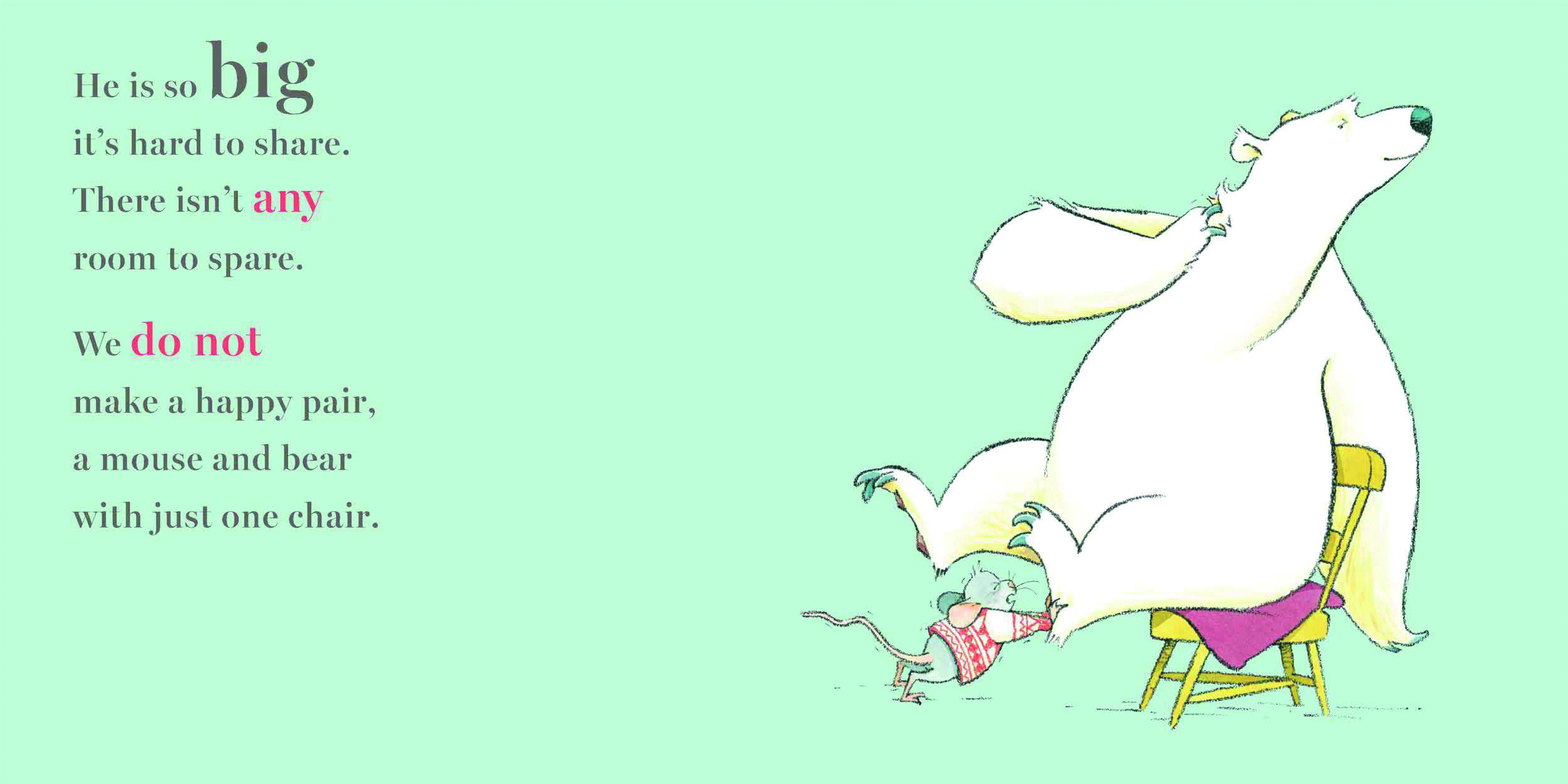
What makes a (modern) classic picturebook?
A picturebook that will be familiar to nearly all practitioners is Michael Rosen and Helen Oxenbury’s We’re Going on a Bear Hunt. This beautifully illustrated book has a marching rhythm which cries out for embodied actions, with children peering through the long grass, or swirling around like the howling snowstorm. Its repetitive structure lends itself perfectly to call and response, and after a few readings children gleefully join in with the refrain, ‘We’re going on a bear hunt, we’re going to catch a big one…’
Here is an example of children memorising and learning to recite poetry, a skill and ability proven by Pullinger and Whitley to be of developmental significance and of importance throughout adult life.
Walker Books released a video of Mr Rosen reciting We’re Going on a Bear Hunt to celebrate its 25th anniversary in 2014: it is now impossible for me to read this story aloud without echoing his engaging, energetic rhythm, which brings the text to life in such a tangible, physical way.
The joyful movement of Ms Oxenbury’s illustrations is the perfect complement to the rambunctious, rhythmic words. Partnered together, they exemplify a deserved classic of the picturebook form – one which sounds just as fresh 31 years after its publication, on every rereading as it did the first.
In a world in which traditional lullabies and nursery rhymes are being forgotten, picturebooks provide a means to reconnect modern children with the joys of rhythm, rhyme and repetition – and have become modern classics in their own right.
‘They sailed away for 150 years and a day…’
Edward Lear’s poem The Owl and the Pussy-catwas first published in 1871. Yet, as it approaches its 150th birthday, it remains as beloved and as lovely as two of the most famous animals ever to sail away in a beautiful pea green boat.
A 2014 poll found it to be Britain’s favourite children’s poem, while it pipped works by Shakespeare and Lewis Carroll to the post in a survey for the poem adults are able best to recall.
In 2013, another author of modern classics of the rhyming picturebook, Julia Donaldson, published The Further Adventures of the Owl and the Pussy-cat. Illustrated by Charlotte Voake, this picturebook echoes Lear’s rhythm and rhyme scheme to tell of what happened next to these unlikely spouses as they begin their new life in the land where the bong-trees grow. The resilience of this poem evidences the particular power of poetry to work its way into our memory, and especially of that which we encounter in childhood.
That Lear was also an artist, who illustrated his fantastical poem, should come as little surprise: the whimsical pictures which accompanied his verse were integral to its early success. There are now hundreds of beautifully illustrated editions of The Owl and the Pussy-cat, as well as of his lesser-known but equally beautiful poems, including The Dong with a Luminous Nose and The Jumblies.
Lear’s poetic language, fabulous descriptions, and wonderful made-up words, cry out for illustration and imagination. How would the children you’re reading with imagine the Lady Jingly Jones? What would the Jumblies look like? Nonsense poetry, in particular, can provide exciting stimuli for imaginative play, artwork, writing or mark-making and discussion.
Using poetry
The Centre for Literacy in Primary Education (CLPE) has identified seven steps to help early years teachers ‘create settings rich in poetry, rhyme and song’.
- ‘Sharing Verse’: build up your collection of rhyming picturebooks for children to access in the classroom, and embed rhymes and songs into your daily routine.
- ‘Compile an Anthology’: create a book of the songs, rhymes and poems important to you and the children in your setting.
- ‘Listening to poetry’: share rhyming picturebooks, and make recordings of nursery rhymes and books available in your listening station.
- ‘A poem a day’: let children choose a favourite poem from a familiar repertoire.
- ‘Looking at language’: discuss the sounds within the words which make poems so appealing – a great way to bring phonics to life, and to think about the sounds and phonemes which make language work.
- ‘Put on a performance’: encourage children to practise and perform their favourites.
- ‘Composing poetry’: how many ways can your children describe the sky? Incorporate their vocabulary and descriptive language into a collaborative free-verse poem.
CLPE offers additional resources for teachers, and book lists, on its website: clpe.org.uk/poetryline.
Ten rhyming picturebooks to kick-start your collection
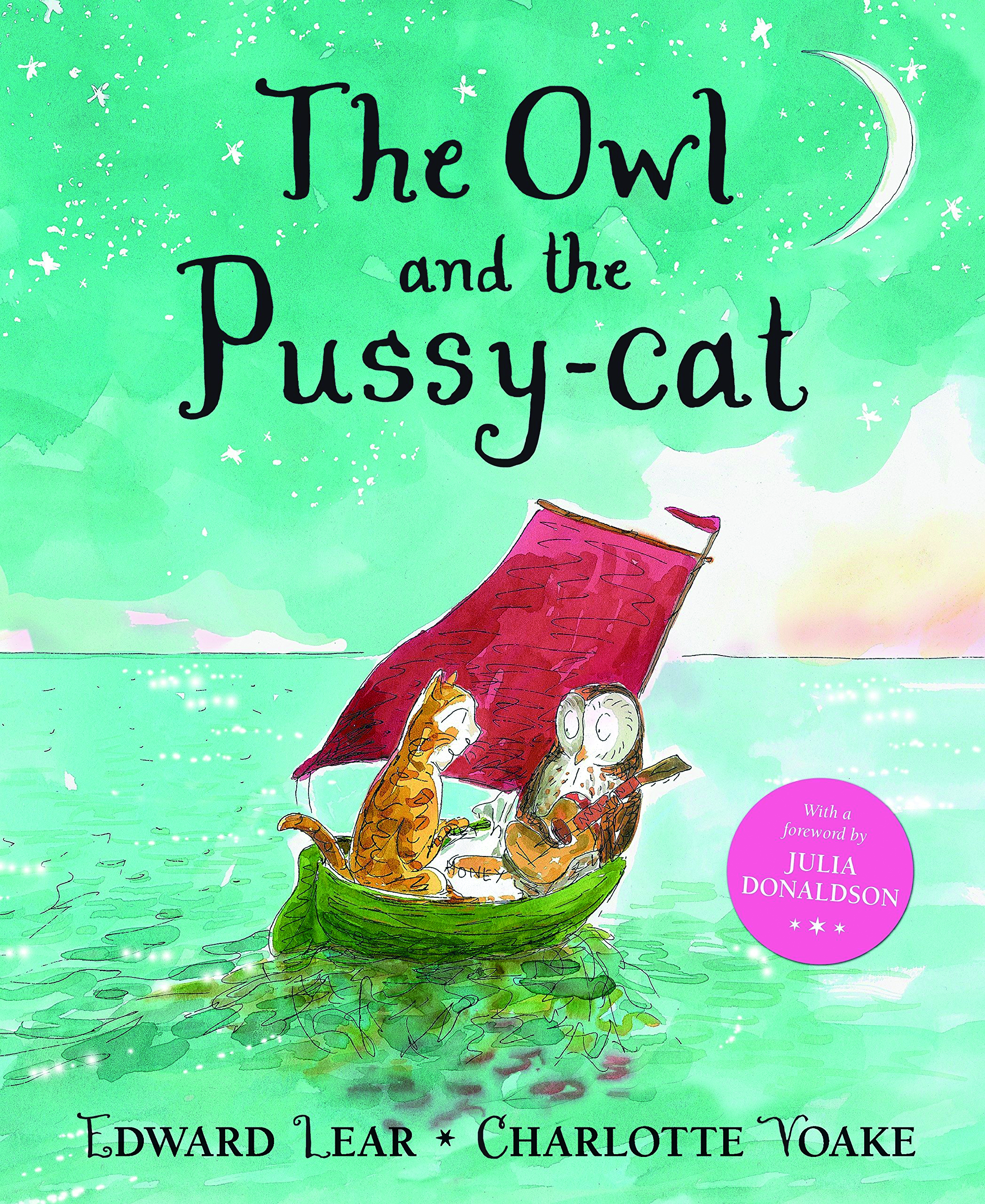 The Owl and the Pussy-cat by Edward Lear and illustrated by Charlotte Voake – Lear’s classic poem has delighted children for generations. With a foreword by Julia Donaldson.
The Owl and the Pussy-cat by Edward Lear and illustrated by Charlotte Voake – Lear’s classic poem has delighted children for generations. With a foreword by Julia Donaldson.
The Further Adventures of the Owl and the Pussy-cat by Julia Donaldson and Charlotte Voake – when their beautiful golden ring is stolen, the Owl and the Pussycat must travel far from the Bong-tree glade as their search for the thief leads them to the Chankly Bore and beyond…
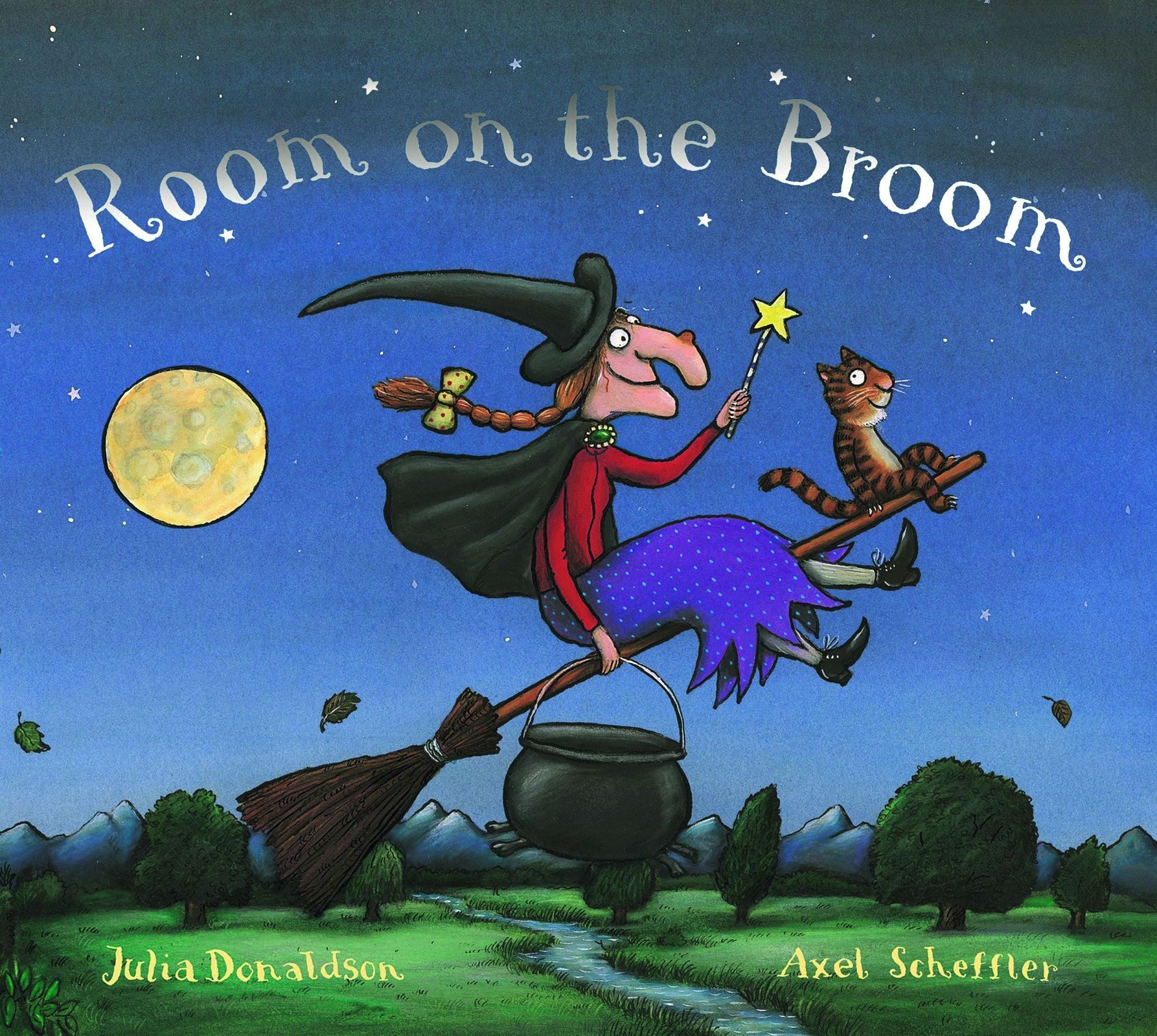 Room on the Broom by Julia Donaldson and Axel Scheffler – the witch and her cat fly happily over forests, rivers and mountains on their broomstick until a stormy wind blows away the witch’s hat, bow and wand. Luckily, they are retrieved by a dog, a bird and a frog, who are all keen for a ride on the broom.
Room on the Broom by Julia Donaldson and Axel Scheffler – the witch and her cat fly happily over forests, rivers and mountains on their broomstick until a stormy wind blows away the witch’s hat, bow and wand. Luckily, they are retrieved by a dog, a bird and a frog, who are all keen for a ride on the broom.
Hairy Maclary from Donaldson’s Dairy by Lynley Dodd – scruffy dog Hairy Maclary goes off for a walk in town, followed by a few 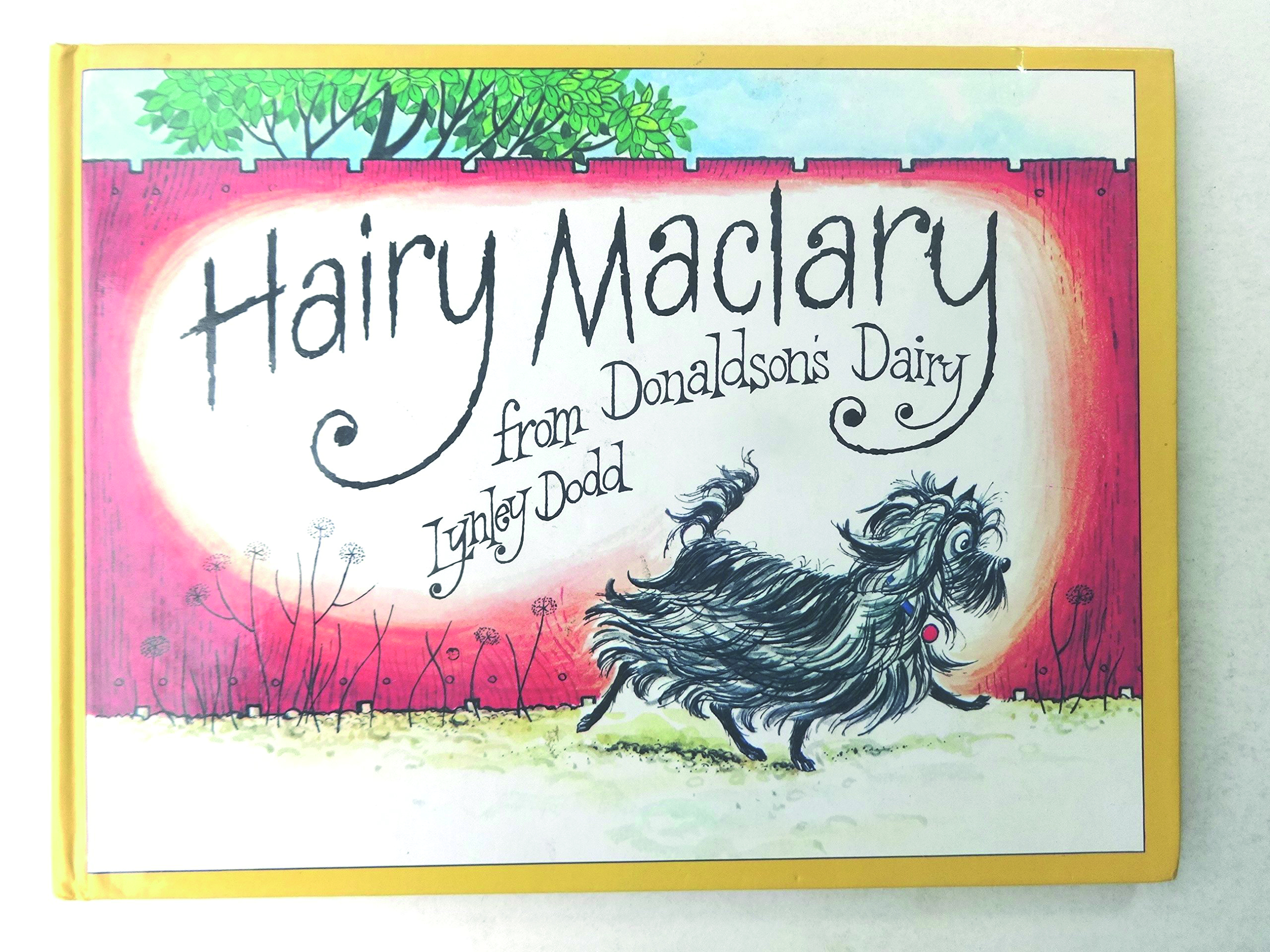 friends – and comes up against a nasty surprise in the shape of Scarface Claw!
friends – and comes up against a nasty surprise in the shape of Scarface Claw!
Each Peach Pear Plum by Janet and Allan Ahlberg – in this timeless classic, each beautifully illustrated page encourages children to find the next fairy tale and nursery rhyme character.
My Cat Likes to Hide in Boxes by Eve Sutton and Lynley Dodd – lots of cats all around the world do exciting things such as fly aeroplanes or play the violin, but my cat, an ordinary round-the-house cat, likes to hide in boxes.
 Sheep on a Ship by Nancy Shaw – six sheep set sail for a high-seas adventure, without first checking the weather forecast. Soon they are caught in a vicious storm and the ship starts to sink. The sheep try everything they can to save their ship and finally manage to return to dry land on a raft.
Sheep on a Ship by Nancy Shaw – six sheep set sail for a high-seas adventure, without first checking the weather forecast. Soon they are caught in a vicious storm and the ship starts to sink. The sheep try everything they can to save their ship and finally manage to return to dry land on a raft.
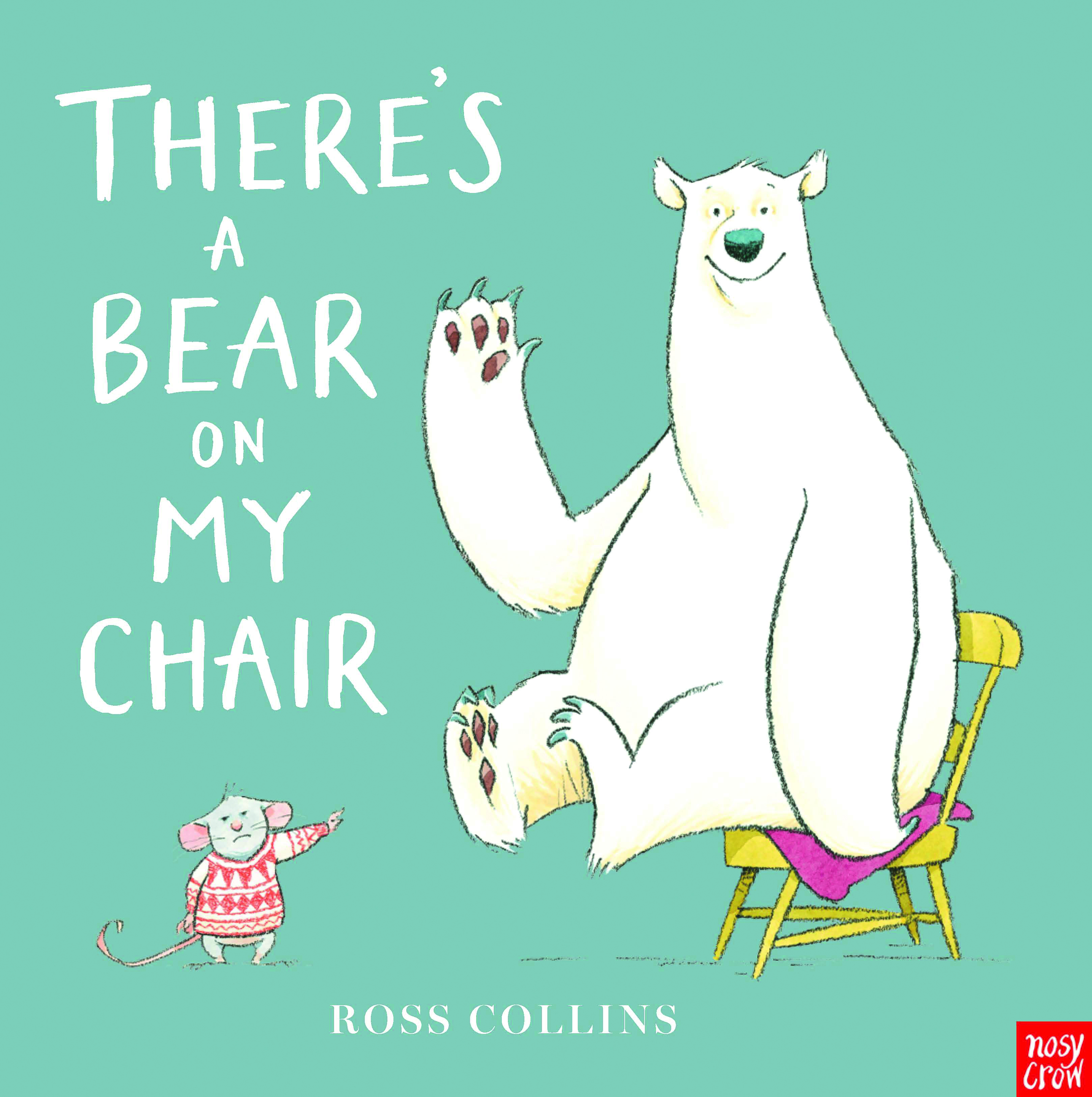 There’s a Bear on my Chair by Ross Collins – Bear sits down on Mouse’s favourite chair and it isn’t big enough for two. Mouse tries all kinds of tactics to move pesky Bear, but nothing works and Mouse gives up. Once Mouse has gone, Bear gets up and heads for home. But is that Mouse in Bear’s house?!
There’s a Bear on my Chair by Ross Collins – Bear sits down on Mouse’s favourite chair and it isn’t big enough for two. Mouse tries all kinds of tactics to move pesky Bear, but nothing works and Mouse gives up. Once Mouse has gone, Bear gets up and heads for home. But is that Mouse in Bear’s house?!
Shark in the Park by Nick Sharratt– Timothy Pope has a brand new telescope and he is testing it out at the park. Peep 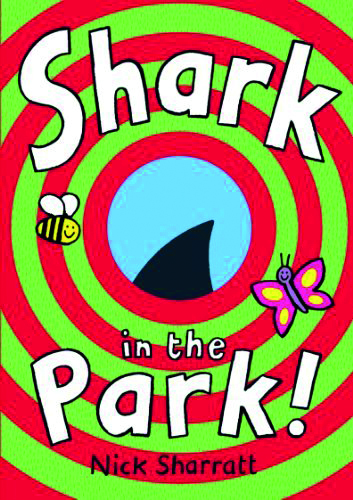 through the die-cut holes in this book to see if you can spy a shark.
through the die-cut holes in this book to see if you can spy a shark.
Whose Knees Are These? by Jabari Asim and Leuyen Pham – a playful look at a child’s knees from the vantage point of the mother’s lap.
Five poetry collections
Poems to Perform: a Classic Collection Chosen by the Children’s Laureate edited by Julia Donaldson and illustrated by Clare Melinsky – Julia Donaldson chooses poems with performance by children in mind to help children enjoy reading and build confidence. The poems range from classics by Edward Lear, W. H. Auden and Eleanor Farjeon to contemporary work by Michael Rosen, John Agard and Clare Bevan.
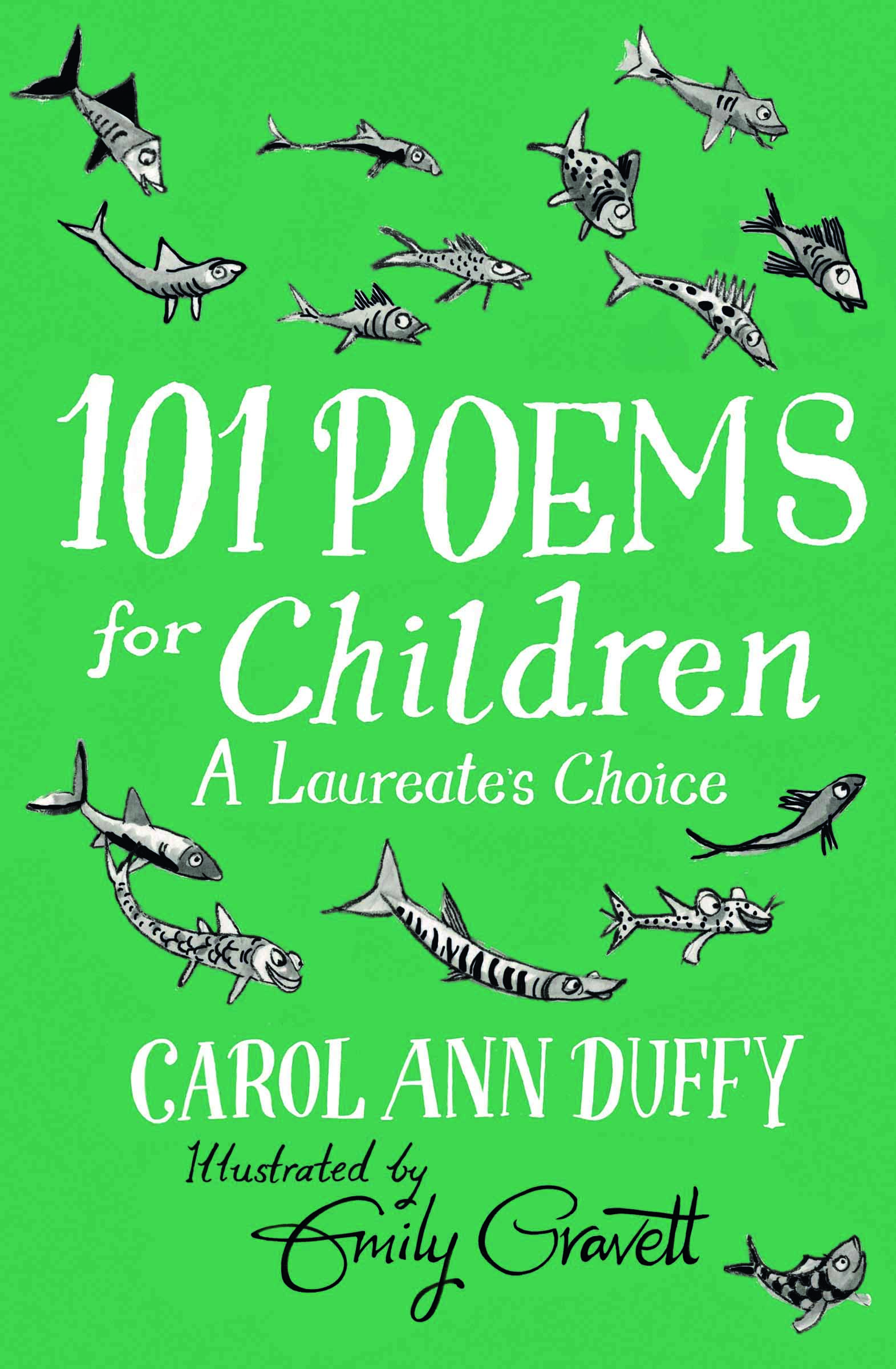 101 Poems for Children: a Laureate’s Choice edited by Carol Ann Duffy and illustrated by Emily Gravett – former children’s laureate Duffy chooses her favourite poems for children, including Lewis Carroll’s Jabberwocky, alongside Edwin Morgan’s The Loch Ness Monster’s Song.
101 Poems for Children: a Laureate’s Choice edited by Carol Ann Duffy and illustrated by Emily Gravett – former children’s laureate Duffy chooses her favourite poems for children, including Lewis Carroll’s Jabberwocky, alongside Edwin Morgan’s The Loch Ness Monster’s Song.
My Village: Rhymes from Around the World edited by Danielle Wright and illustrated by Mique Moriuchi – this collection of nursery verses for young children (and the young at heart) includes quirky, touching and funny verses from 22 countries, from Iran to Iceland, Samoa to Switzerland.
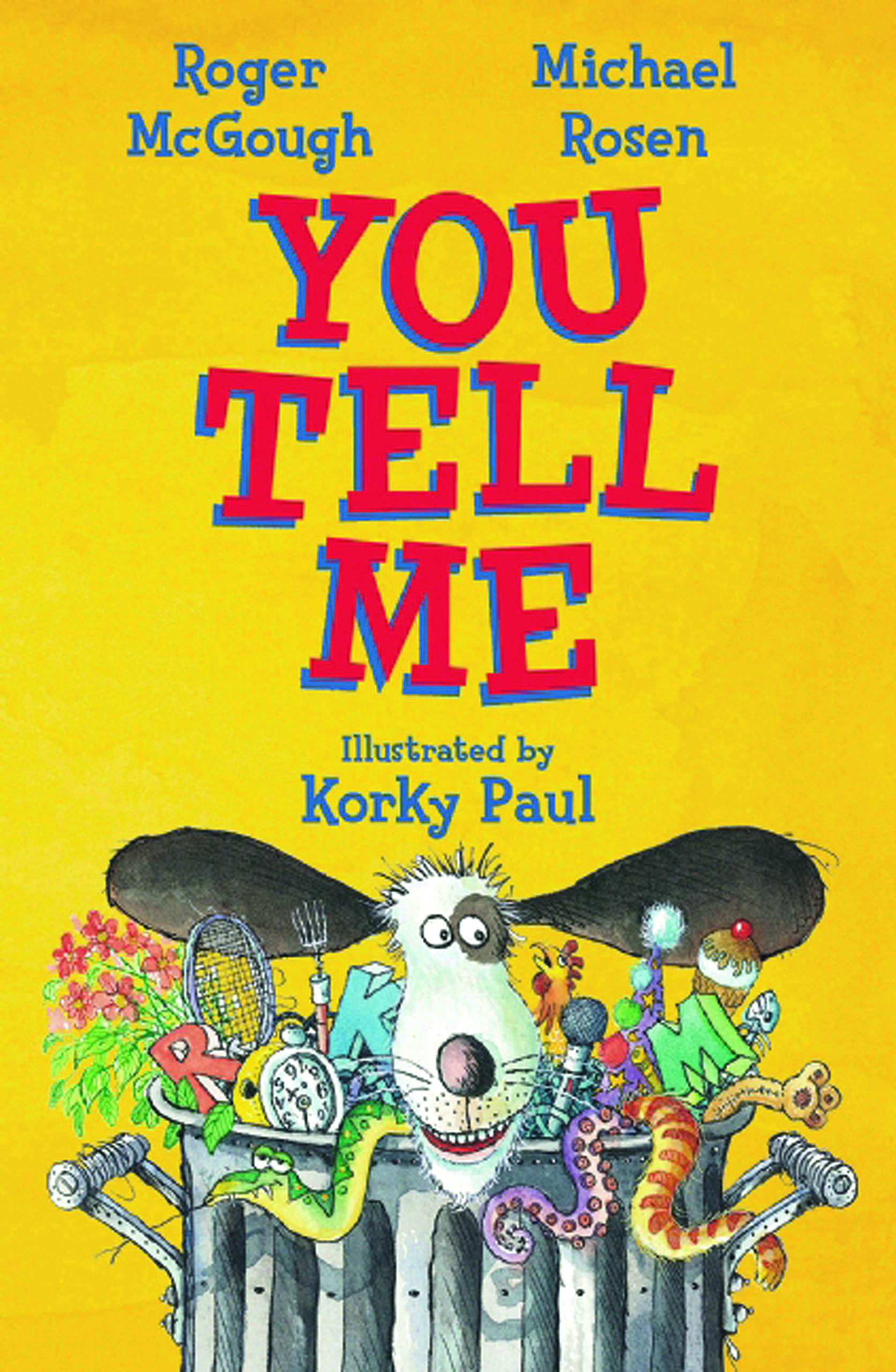 You Tell Me by Roger McGough and Michael Rosen and illustrated by Korky Paul –a fantastic poetry collection by two of the funniest poets writing today.
You Tell Me by Roger McGough and Michael Rosen and illustrated by Korky Paul –a fantastic poetry collection by two of the funniest poets writing today.
A Great Big Cuddle by Michael Rosen and illustrated by Chris Riddell– two former children’s laureates come together to create a collection of poems that fizz off the page with sound and rhythm, energy and laughter. Rosen captures what it means to be very, very young, with poems about toys and games, animals and made-up creatures, likes and dislikes.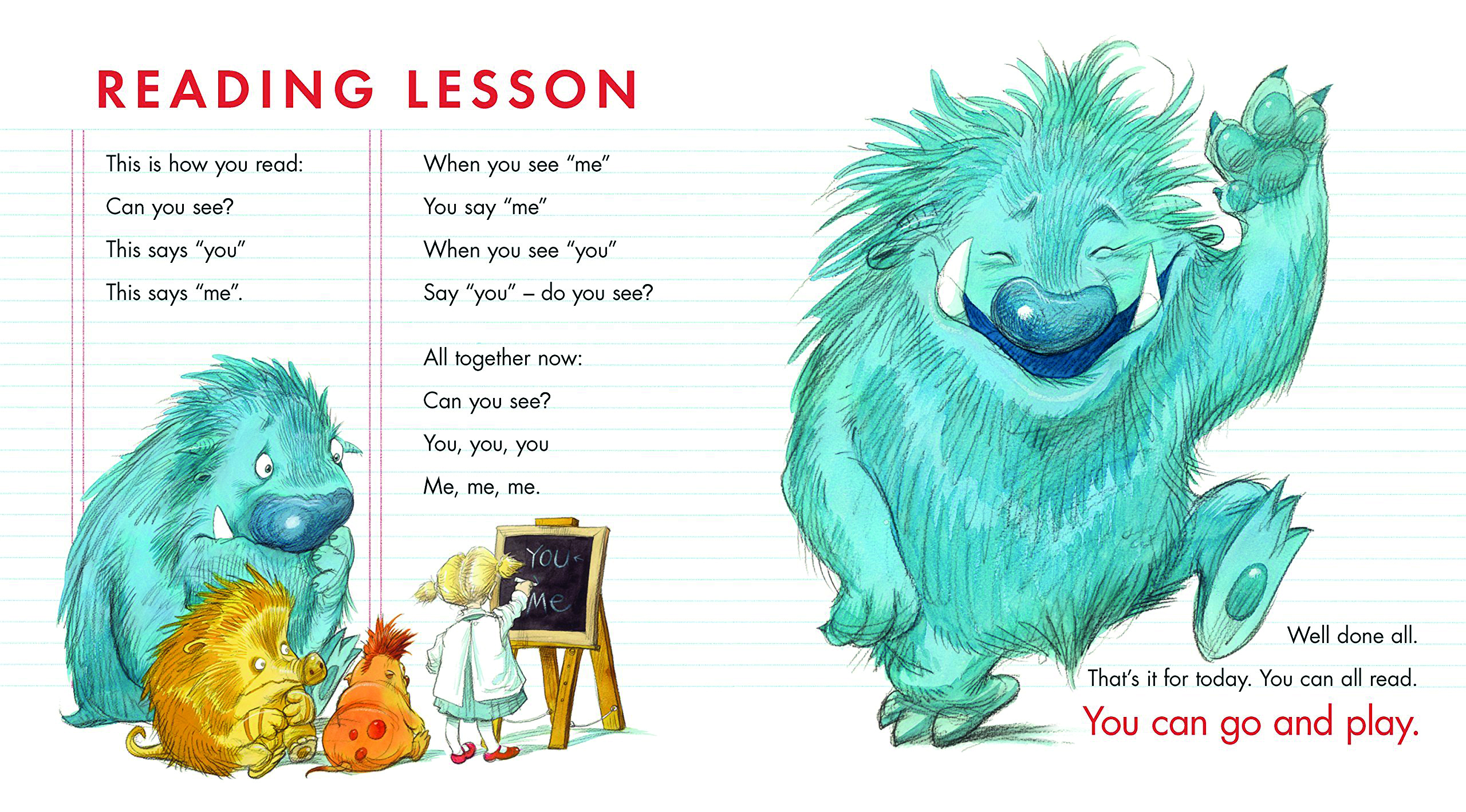
MORE INFORMATION
For the full 2020 reading list and other resources, visit: www.empathylab.uk
Andy McCormack is an Early Years Teacher studying for his PhD at the Centre for Research in Children’s Literature, University of Cambridge









